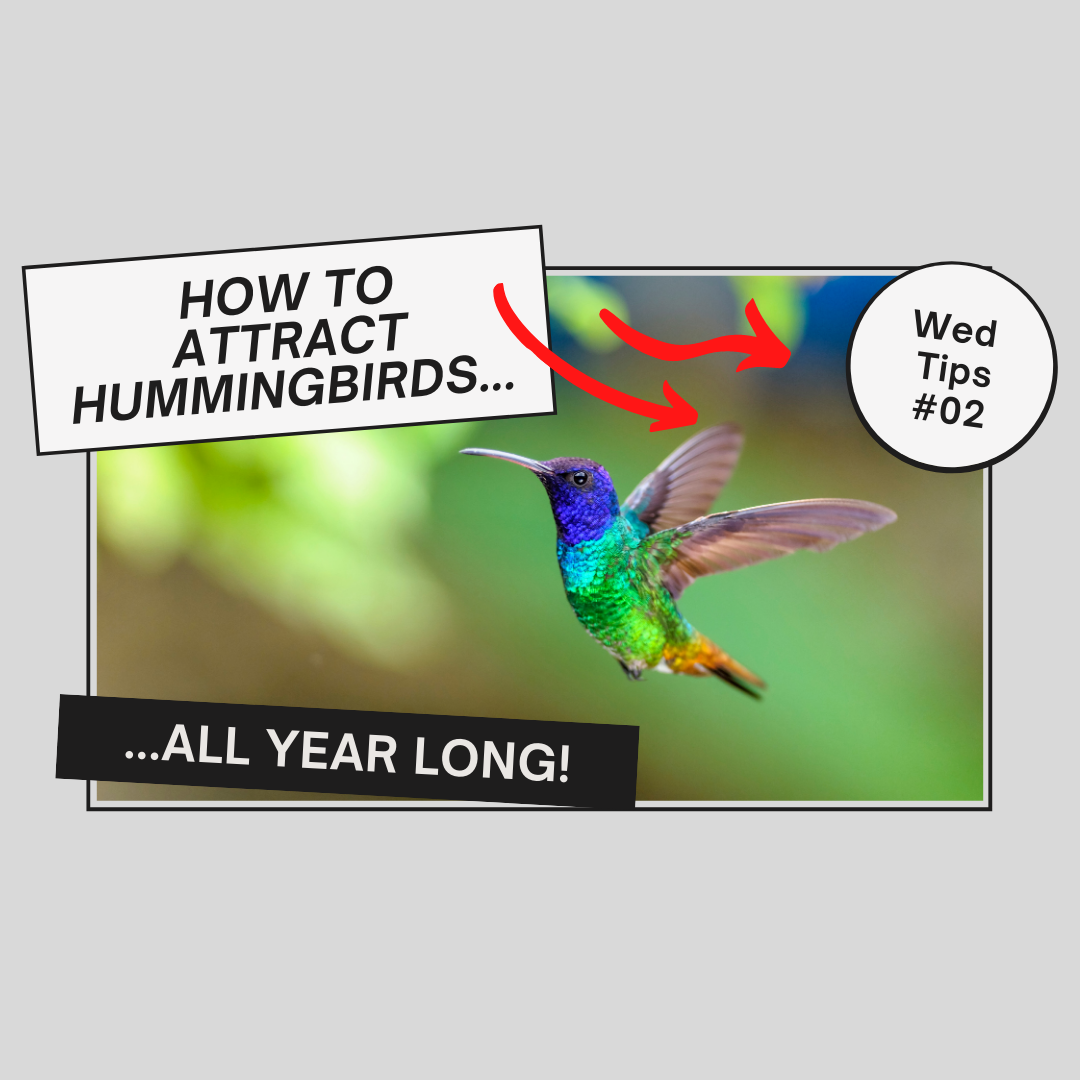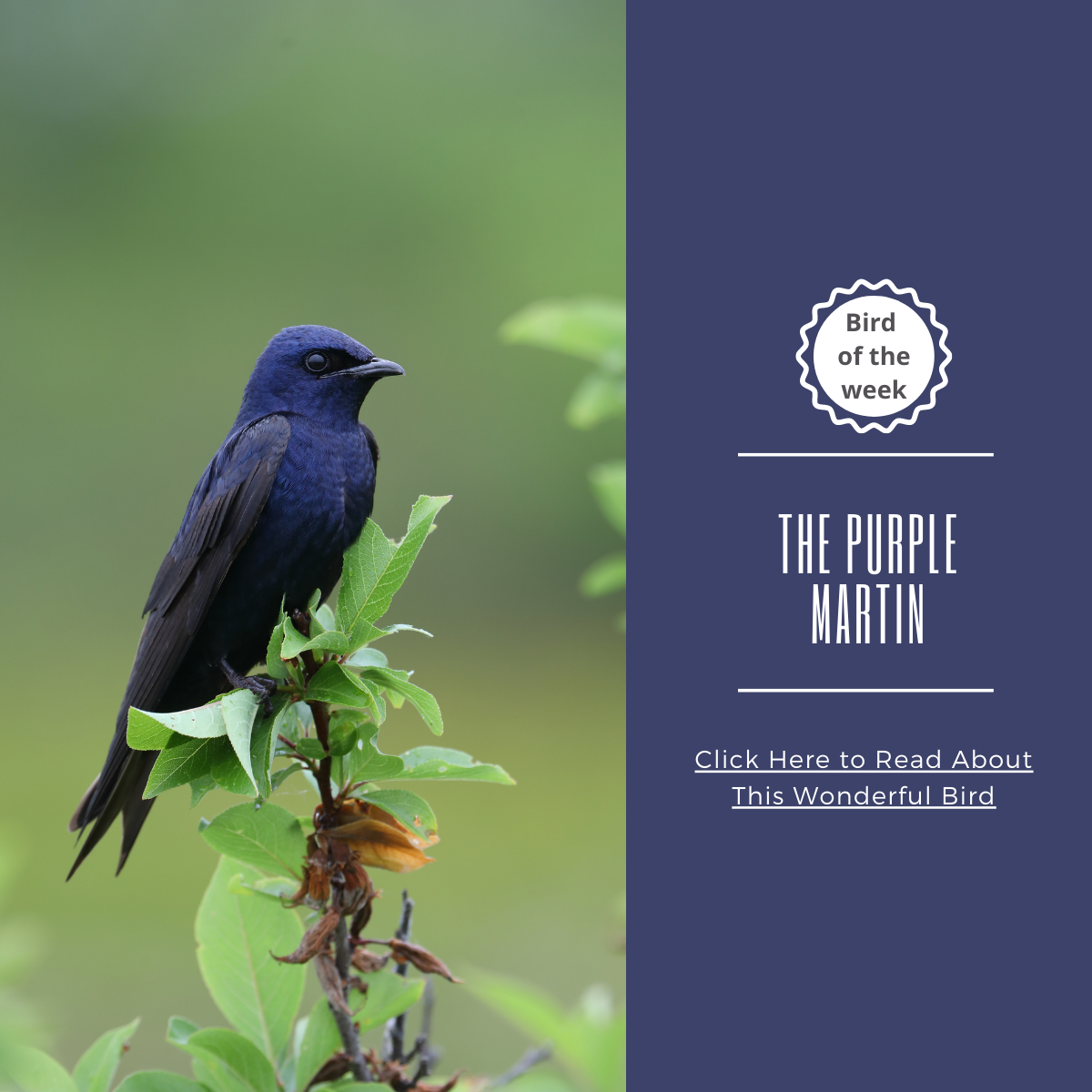
Join us as we start the year with this sassy songbird-of-the-week! Carolina Wrens are almost as fun to watch as hummingbirds as they are so busy, melodic and cute. As the eminent American ornithologist Arthur Cleveland Bent said: “they are delightful and give us a warm touch of southern hospitality, a hearty welcome to Dixie Land.”
Carolina Wrens fly in pairs or with their fledglings. Feeding close to the ground, they run, hop and flit around dense vegetation and dead leaves. They like dark spaces as well as climbing up vines and trees, poking into squirrels’ nests and any space from where they can rustle up insects.
They usually hide in brush piles, dense forest and thick vegetation. They peck pretty low - on bark, shrubberies and leaf litter.
Carolina Wrens use their bills to turn over decaying vegetation and to hammer and shake apart large bugs. Many wrens visit our backyards, but the Carolina Wren is the most brightly coloured and musical of the bunch. Very common in open woods and backyards, they can be seen all the way up to the great lakes and around New England - even as far as southern Ontario, Canada.
It is strange that these birds don’t migrate south in the winter. If it gets too cold, they can’t dig for insects through hard ice. They haven’t developed survival mechanisms for the winter like other birds. After an unusually cold winter when many have perished, luckily they will rebound, recuperate and again grace us with their sweet song.
In case you missed the last bird-of-the-week: The Eastern Bluebird
LOOKS:

The Carolina Wren is a plump little tea-pot singing “TEA-kettle TEA-kettle”! It is around 5.5 inches tall and weighs ¾ of an ounce. Its back is coloured a cinnamon brown with a buff-coloured belly and the throat is cream coloured. But the main identifying element, other than the cocked tail, is the striking white stripe above and beyond the eye.
The tail is pretty long, a darker hue of rusty-brown, often poised upward like a baton. Males and females are identical, except that males are usually slightly larger.
Their average lifespan is pretty impressive: 6 years! Not bad for a teacup-sized bird. The oldest known Carolina Wren in the wild was 7 years 8 months old.
WREN EATS
The menu for the Carolina Wren consists mainly of various kinds of insects and larvae, as well as tree frogs, bugs, beetles, moths, grasshoppers, wasps and spiders. They look for their food in dense vegetation so as to be hidden, especially in decaying logs and trees or on the banks of swamps.
When the thermometer goes down and insects are scarce, Carolina Wrens will also eat berries and fruit, snails and slugs. They like bayberries, sweet gum, poison ivy, sumac, acorns and weeds. So it's always good to have native berry shrubs in your garden.
Try NOT to weed or tidy your garden too much. As far as the wrens are concerned, the messier the better, as the area will then attract insects and give them a really good meal. You can also add a brush pile to your feeding area to give them an extra feeling of security.
When the male and female go foraging, the female will be on the lookout more than the male, as her chances to survive without male protection are low.
WREN BIRD FEEDERS
During harsh winters, Carolina Wrens depend on bird feeders for food as they can’t pierce hard ice.
Suet feeders are the best bet for these little ones. But you can also put out a tray or platform feeder with mealworms, peanut butter or crushed peanuts which have not been salted or treated in any way.
These inquisitive birds are not easy to attract but with the right food and setting, you might even get as far as getting them to eat out of your hand. For a split second...
WREN SOUNDS
Carolina Wrens can be heard before they are seen and males are the main performers. If you hear something along the lines of “Tea Kettle Tea Kettle” or “Cherry Cherry Cherry”, you’ll know who your visitors are!
When a Carolina Wren trespasses into the territory of another Carolina wren, the defender will fan his feathers out and give the intruder a noisy piece of his mind!
WREN LOVIN’
Carolina Wrens are monogamous for life. When courting, the male performs a little circle dance around the female while fluffing out his feathers. He may also bring her some insects for a romantic dinner for two.
When they pair, they sing little duets and melodies together. The males are the ones who are more melodic as the females can only “chatter” back with a “cheeeee-cheee”.
Carolina Wrens brood a few times every year between March and October. The parents build the nest together 3-10 feet off the ground. Every nest is usually used only once, but all of the subsequent nests will be built in the same area. They can settle in some peculiar places around backyards: tucked in a drainpipe or grill, in old shoes and empty cans, hanging plants, open mailboxes, nest boxes, and garages or tool sheds if the door is left open. My favourite is this mop:

The nest is dome-shaped, consisting of twigs, grass, bark and other soft materials. A unique feature of their nests is a side entrance. Perhaps because they build the nest so close to the ground, the side entrance makes the nest not as easy to spot.
Females lay an average of 5 creamy-pink eggs with a few brown spots. She incubates them for about two weeks and during that time her mate brings her food. Sometimes they switch, and the male will incubate the fledglings as the female gets food.
Once hatched, both feed the young’uns for about two weeks before they gain independence and leave the nest. Towards the end of the two weeks, the parents will make a few trips back to the nest with no food - a hint to the young’uns that it’s time to leave home.
FUN FACTS
It ain't over till the little bird sings
The Carolina Wren can sing with the loudest volume per bird size. They will sing at any time, wherever they happen to be, not just for mating or territoriality. They need no excuse to break out with a chirp and a song.
Busy songs
A Carolina Wren has been known to sing 3,000 times a day.
Male singers
These birds are unique in that only the male sings. Females do more of the chattering.
Wing logic
Wrens will use their wings more for hopping from object to object than for flying.




4 comments
David Schoenberger
Have a pair that took up residence in my bluebird house there’s 5 eggs in there now
Lindy Cranwell
I enjoyed this article about Carolina Wrens.
I have a Carolina Wren who sits on my covered grill every day and sings so beautifully!
Just yesterday I was watching and listening, wondering if it was a male or female.
But, reading this article I can now assume that indeed it is a male.
They certainly are fun little birds to have around your yard.
I even get a kick out of how loudly they scold you if you get too close to them.
Amanda
Where I live, in Southern Appalachia, we call these birds sweet tater birds. Because they sounds like they are singing “sweet tater sweet tater.” This was my mom’s favorite bird. She loved the sound of them and when one nested on her porch, she’d go to the window and check on them to make sure no cats or other animals disturbed their precious little nest.
JoJ.
I’m in SC and see the cute Carolina wrens often. They are a delight! Didn’t know that it’s only the male I hear with the characteristic song. Thanks for the great article!
Leave a comment
All comments are moderated before being published.
This site is protected by hCaptcha and the hCaptcha Privacy Policy and Terms of Service apply.